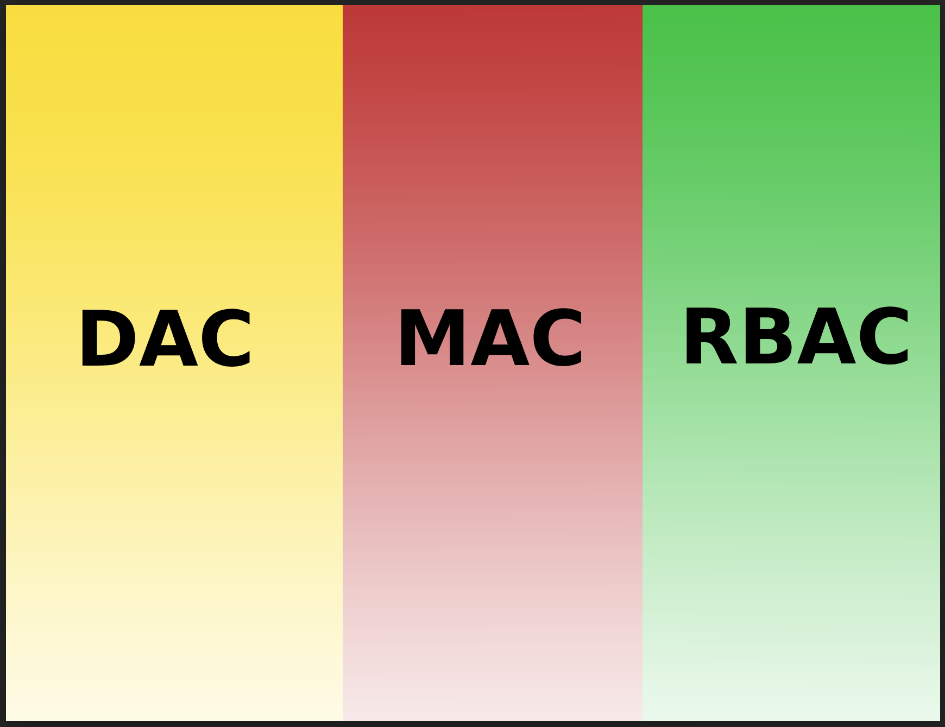MAC, DAC, and RBAC are all access control mechanisms used in computer security, but they differ in their approaches and implementations:
- MAC (Mandatory Access Control):
- In MAC, access control is determined by the admin or system rather than the owner of the resource or the user.
- Access permissions are set by a central authority (usually the operating system) based on security labels or classifications.
- Users cannot override or modify access controls set by the system, even if they own the resource.
- MAC is commonly used in government and military environments where strict control over data access is required.
- DAC (Discretionary Access Control):
- DAC gives users control over the access permissions of the resources they own.
- Owners can specify who can access their resources and what level of access they have.
- Access control decisions are discretionary, meaning they are left to the discretion of the resource owner.
- DAC is typically used in systems where users require flexibility in managing access permissions, such as personal computers and small business networks.
- RBAC (Role-Based Access Control):
- RBAC assigns permissions to users based on their roles within an organization.
- Users are assigned roles that correspond to their job functions, and permissions are granted to these roles.
- This simplifies access management by reducing the complexity of assigning permissions directly to individual users.
- RBAC is effective in large organizations where there are many users with varying levels of access requirements, as it helps to manage permissions in a more structured and scalable way.
In summary, MAC focuses on centralized control, DAC gives control to resource owners, and RBAC organizes access based on user roles within an organization. Each has its own advantages and use cases depending on the security requirements and organizational structure.


